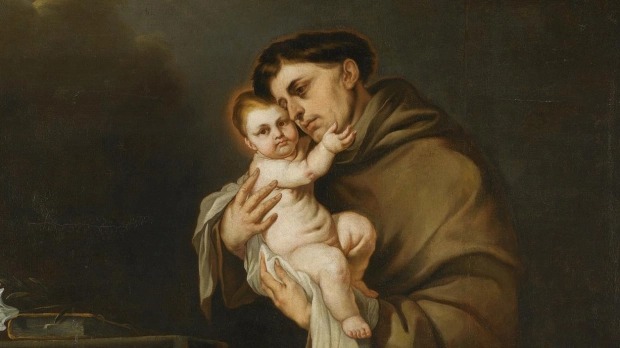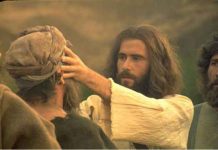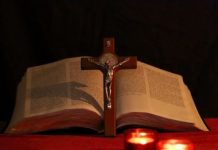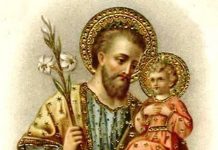Saint Anthony of Padua
Saint Of The Face Book Page/June 13/2023
تذكار القديس انطونيوس البدواني/13 حزيران
موقع قديس اليوم/13 حزيران/2023
وُلِدَ هذا القدِّيس في مدينة لشبونه، عاصمة مملكة البرتغال سنة 1195، من أسرة غنيّة، تقيّة. ولمّا كبر دخل رهبانيَّة القدِّيس أغوسطينوس وصار قدوة للفضيلة والعلم فيها لا بل عَلَمًا من أعلامها. غير أنّ أهله عارضوه في دعوته فنقل إلى دير آخر.
وفي ديره الجديد، زاد تفرغًا لعبادة الله واقتباس العلوم. ثمَّ نقل إلى رهبانيَّة مار فرنسيس. وحضر مجمع رهبانيته الذي عقده القدِّيس فرنسيس. وفي سنة 1222 رُقي الى درجة الكهنوت وخطب الخطبة المعتادة، إطاعة لرئيسه، وكان لخطابه وقع شديد، فأمره القدِّيس فرنسيس بإلقاء الوعظ. فتهافت النّاس لسماعه فارتدّ بكلامه كثيرون من الخطأة والكفرة إلى التوبة.
وانتُدب إلى علم اللاهوت في مدن كثيرة من إيطاليا، وفرنسا، فطارت شهرته بعلم اللّاهوت كما بالوعظ، وقد أجرى الله على يده آيات باهرة.
ثمَّ سار إلى بادوا وعكف على إلقاء المواعظ. واذ كانت الكنائس تضيق بالسَّامعين، كان يعظ في السَّاحات والحقول. ومع كثرة أعماله هذه الرَّسوليَّة، لم يكن ينفكّ عن ممارسة أنواع الإماتات والأصوام والصَّلوات، فسقط كالجنديّ في ساحة الوغى، وأسلم روحه بيد الله في 13 حزيران سنة 1231 وهو في السَّادسة والثلاثين من عمره. وانتشر تكريمه، فعمَّت الدنيا. وهو الشّفيع للملايين. والناس يلتجئون إليه، خاصّة، في أخطار الغرق وضياع الأشياء.
وقد أحصاه الكرسيّ الرَّسوليّ، بعد وفاته بسنة، في مصاف القدِّيسين في عهد البابا غريغوريوس التاسع. صلاته معنا. آمين.
Saint Anthony of Padua
Saint Of The Face Book Page/June 13/2023
St. Anthony was born in 1195 (13 years after St. Francis of Assisi) in Lisbon, which is now known as Portugal. Given the baptismal name of Fernando, his parents, Martin and Mary Bulhom, belonged to one of the most prominent families of the city.
At the age of 15 Fernando entered the religious order of St. Augustine. Monastery life was hardly peaceful for the youth, nor conducive to prayer and study, since his old friends came to visit frequently and engaged in vehement political discussions. After two years, at his request he was sent to Coimbra (cornbrow). There he began nine years of intense study learning the Augustinian theology that he would later combine with Franciscan vision. Fernando was most likely ordained a priest during this time.
The life of the young priest took a crucial turn when the bodies of the first five Franciscan martyrs were returned from Morocco. The Franciscans had been preaching Christ at a mosque in Seville. They were in danger of being martyred at the outset, but the sultan allowed them to pass on to Morocco, where, after continuing to preach about Christ — despite repeated warnings, they were tortured and beheaded.
In the presence of a huge crowd, including the queen, their remains were carried in solemn procession to the very monastery where Fernando lived.
This event, while viewed by many as tragic and sad, was deemed glorious, and in fact was an inspiration to young Fernando. So much so, that it inspired him to make a momentous decision, one that would change his life and the lives of many to come. He decided that he too would become a Franciscan!
From the beginning, he shared his feelings with the Franciscan brothers saying, “i would gladly put on the habit of your order if you would promise to send me as soon as possible to the land of the Saracens, that I may gain the crown of the Holy Martyrs.” to accomplish this he asked permission to leave the order of St. Augustine. After some challenges from the prior of the Augustinians, he was allowed to leave that priory.
The young Augustinian monk called Fernando went to the convent of St. Anthony, where he took vows of the Franciscan order and assumed the name of Anthony in honor of the patriarch of hermits.
True to their promise, the Franciscans allowed Anthony to go to Morocco, to pursue what he felt was his calling – to be a witness for Christ, and a martyr as well, if God asked.
But, as often happens, the gift Anthony wanted to give was not the gift that was to be asked of him. While in Morocco, he became seriously ill, and after several months realized he had to go home.
During the journey home, his ship ran into storms and high winds and was blown east across the Mediterranean. Eventually his ship made land on the east coast of Sicily. The friars at nearby messina, though they didn’t know him, welcomed him and began nursing him back to health. Still ailing, Anthony wanted to attend the great Pentecost chapter of mats (so called because the 3,000 friars could not be housed and slept on mats). Francis of Assisi was there and was also sick.
Since Anthony was essentially a visitor from “out of town” at the friary in Sicily, he received no assignment during the chapter of mats, so he asked to go and be with a provincial superior from northern Italy. “Instruct me in the Franciscan life,” he asked, not mentioning his prior theological training.
When the provincial superior agreed, Anthony was overjoyed. Now, like Francis, he had his first choice — a life of seclusion and contemplation in a hermitage.
Anthony was first recognized for his great gift of preaching at a gathering for the ordination of Dominicans and Franciscans in 1222. After they finished their meal, the provincial suggested that one of the friars give a short sermon. There were no immediate volunteers among the group, so Anthony was asked to give “just something simple,” since he presumably had no education and at the time was only 27 years old.
Anthony, while resisting the offer at first, finally began to speak in a simple, artless way. The “fire” within him became evident. His knowledge was unmistakable, but it was the passionate manner in which he spoke that truly impressed everyone in attendance.
Once his talents and knowledge were exposed, his quiet life of prayer and penance at the hermitage was exchanged for that of a public preacher. Francis heard of Anthony’s skills as a preacher, and re-assigned the young priest to preach in northern Italy.
We know that not everyone was impressed by his preaching. Legend has it that one day, faced with deaf ears, Anthony went to the river and preached to the fish. That, reads the traditional tale, got everyone’s attention.
Anthony traveled tirelessly in both northern Italy and southern France—perhaps 400 trips—choosing to enter the cities where the heretics were stronge St. Yet the sermons he has left behind rarely show him taking direct issue with them. As church historians interpret it, Anthony preferred to present the grandeur of Christianity in positive ways. It was no good to prove people wrong: Anthony wanted to win them to the right, the healthiness of real sorrow and conversion as well as the wonder of reconciliation with a loving father.
Anthony’s superior, St. Francis, continued to hear glowing reports of Anthony’s sermons, knowledge of scripture and devotion to Mary. In 1224 he wrote to Anthony asking him to teach his brother Franciscans. Anthony became the first teacher of the Franciscan order to be given special approval and blessings of St. Francis.
Anthony continued to preach as he taught the friars and assumed more responsibility within the order. In 1226 he was appointed provincial superior of northern Italy, but still found time for contemplative prayer in a small hermitage.
Around Easter in 1228, at the age of 33, he met Pope Gregory IX in Rome. The Pope had been a faithful friend and adviser of St. Francis. Naturally, the famous preacher Anthony was invited to speak. He did it humbly, as always. The response was so great that people later said that it seemed the miracle of Pentecost was repeated.
Back in Padua in 1231, Anthony preached his last and most famous Lenten sermons. The crowds were so great—sometimes 30,000—that the churches could not hold them, so he went into the piazzas or the open fields. People waited all night to hear him. A bodyguard was needed to protect him from the people armed with scissors who wanted to snip off a piece of his habit as a relic. After his morning mass and sermon, Anthony would hear confessions. This sometimes lasted all day—as did his fasting and constant prayer.
The great energy he had expended during the Lenten season left him exhausted. He went to a little town near Padua to rest and recover, but he soon realized death was coming close and he wanted to return to Padua, the city that he loved. The journey in a wagon weakened him so much, however, that he had to stop at Arcella. In the end, he had to bless Padua from a distance, as Francis had blessed Assisi from a distance.
At Arcella, he received the last sacraments, sang and prayed with the friars there. When one of them asked Anthony what he was staring at so intently, he answered, “I see my lord!” he died in peace a short time after that. He was only 36 and had been a Franciscan for only 10 years.
The story and tradition of devotion to St. Anthony of Padua began almost immediately upon his death on June 13, 1231. Thousands came to view the body of Anthony and attend his burial. His grave at once became a place of extraordinary devotion and numerous miracles. The following year, his friend, Pope Gregory IX, moved by the many miracles attributed to him during his life and that occurred at his tomb, declared him a saint. In 1946, Pope Pius XII officially declared St. Anthony a doctor of the church.






















